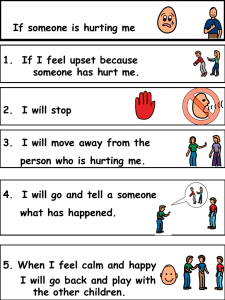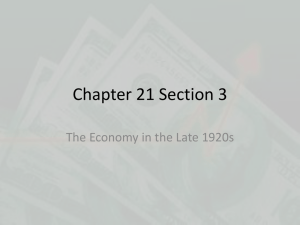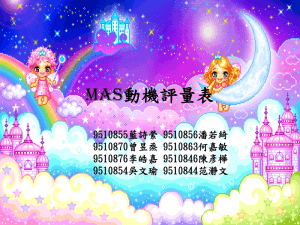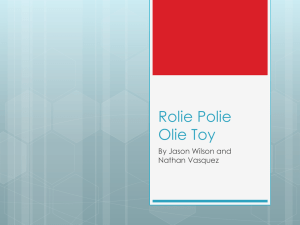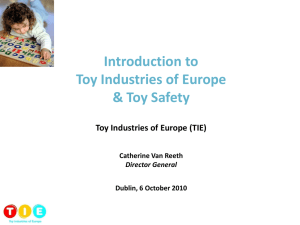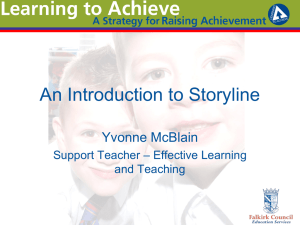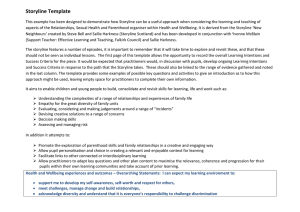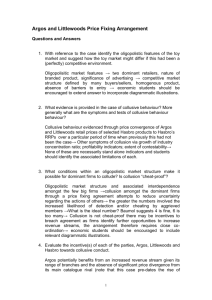可持续发展的故事
advertisement
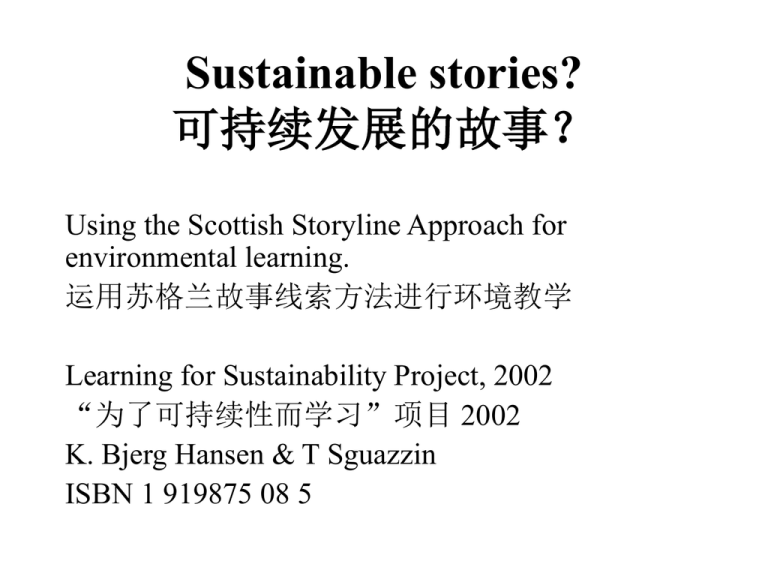
Sustainable stories? 可持续发展的故事? Using the Scottish Storyline Approach for environmental learning. 运用苏格兰故事线索方法进行环境教学 Learning for Sustainability Project, 2002 “为了可持续性而学习”项目 2002 K. Bjerg Hansen & T Sguazzin ISBN 1 919875 08 5 What is storyline? 什么是故事线索? • Using story to provide a structure for learning • A plot with a problem to be solved • Involvement via empathy, modelling, role play, conflict resolution • Comparison with own context > new knowledge and new solutions > action competence • Partnership between students and teachers – values learners’ knowledge and experience • Ownership of storyline and learning > empowerment •运用故事为学习提供一个框架 •情节中含有一个需要解决的问 题 •通过移情、做模型、角色扮演 和解决冲突而参与其中 •比较:自己的处境>新的知识 与新的解决方法>行动能力 •学生与教师之间的合作伙伴关 系——尊重学习者的知识与经 验 •对故事和学习的所属感>建立 能力 The six elements of storyline 故事线索的六个元素 1. 2. 3. 4. 5. 6. The one sentence aim The story – structure (time, place, people and animals/plants, plot) Key questions – to encourage use of prior knowledge – extend knowledge Mental models – created before looking at reality The line – the structure to construct meaning and ideas Reality – using narrative to deal with reality – look at context in new ways 1. 一句话目标 2. 故事——结构(时间,地点, 人物和动植物,情节) 3. 关键问题——鼓励使用以前的 知识——拓展知识 4. 头脑模型——在考察现实情况 前已建立好的 5. 线条——建构意义和观念的结 构 6. 现实——使用叙述/记事来讨论 现实——用新的方式看待所处 的境况 The six storyline principles 故事线索的六条原则 1. Story – stories can enlighten us 2. Anticipation – what is going to happen next 3. Teacher’s Rope – teacher holds the storyline rope that is flexible – allows for bends, twists and knots 4. Ownership – learners feel responsibility, pride, enthusiasm for a story they help to build – their conceptual models are valued 5. Context – new learning built on old – known to unknown – context provides reasons for learning – story requires development of new knowledge 6. Structure before activity – prior knowledge pushed to extremes – see gaps – given structures to find out what they want to know – activities – related to differing levels of knowledge and ability. 1. 故事—— 故事可以启迪我们 2. 悬念——下面将会发生什么 3. 教师的绳子——教师掌握着具有灵 活性的故事线的绳子——允许中间 的转弯,扭曲和打结 4. 主人翁意识——学习者对自己所帮 助讲述的故事感到有责任、自豪和 热情——他们的概念模型受到重视 5. 背景——建立在旧有知识基础上的 新的学习——从已知的到求知的— —背景提供了学习的理由——故事 要求开发新的知识 6. 在活动前先有结构——以前的知识 被推到极限——看到差距——特定 的结构来找出他们想要知道的事 情——活动——与不同层次的知识 与能力联系起来 ‘Typical’ toy factory in China 中国“典型的”玩具工厂 Mandatory daily shifts of 15 to 16 ½ hours, 8:00 a.m. to 11:00 p.m. or 12:30 a.m. Some 20-hour, all-night shifts required, from 8:00 a.m. to 4:00 a.m. Seven-day workweek Working 30 days a month At the factory 103 to 112 hours a week Workers fainting from the long hours and exhaustion Twelve-to-14-cent-an-hour wages $8.42 for a 72 ¼-hour workweek Workers cheated of $20.79 a week—70 percent--of the legal minimum wage owned them Handling toxic chemical glues, paints and solvents. Workers do not even know the names of the chemicals, let alone their health hazards Workers constantly dizzy, nauseous and on the verge of throwing up from the strong chemical paint odor which hangs thick in the factory air. 104-degree factory temperature Sick workers fired 16 workers share one small dorm room Workers have never heard of, let alone seen Mattel’s, Hasbro’s, Disney’s, McDonald’s, Toy’s ‘R’ Us or Wal-Mart’s so-called Codes of Conduct. Freedom of Association absolutely repressed. •强制性地每天工作15至16个半小时,从上午 八点到晚上11点或凌晨12:30 •有时要求工作20小时,整夜轮班,从上午八 点到凌晨四点 •每周工作七天 •每月工作30天 •在工厂每周工作103到112小时 •工人因为长时间工作及极度疲劳而晕倒 •工资合每小时12至14美分 •或每周工作72 ¼-小时的工资为8.42美元 •工人每周被骗走20.79美元—合他们法定最 低工资的70% •接触有毒化学粘剂、油漆和溶解剂。工人们 甚至不知道这些化学物品的名称,更何况对 他们的健康所造成的危害 •工人们经常感到眩晕,恶心,工厂空气中弥 漫着的浓烈的化学油漆的气味使他们几乎呕 吐 •104度的工厂温度 •生病的工人被解雇 •16个工人挤在一间小小的宿舍里 •工人们从来没有听到过,更不要说看到 Mattel’s, Hasbro’s,迪斯尼或麦当劳了 •Toy’s ‘R’ Us或沃尔玛的所谓的行为规范 •绝对压制“交往自由” Toy worker 1 玩具厂工人甲 “I’ve worked for more than a year now. The highest wages I’ve gotten was 700 rmb ($84.57) a month. I make an average of 500 to 600 rmb ($60.41 to $72.49) and 300 rmb ($36.25) during slack season. My husband also works in Shenzhen. He’s a driver and earns 1500 rmb ($181.23) a month. My kids are left with my parents at home. My husband I come from a poor village where nothing grows on the land. We had to leave. We live separately because we can’t afford to rent a flat. We meet every Saturday. I can’t save much on my salary. In toy factories, you get a better income only during peak season. When the slack season comes, you can’t even survive with what you get, never mind saving anything.” -A worker in Company B “我在这儿工作一年多了。我拿到过 的最高工资是每月700元(84.57美 元)。我每月平均能挣到500到600元 ( 60.41 美元到72.49美元),淡季时 是300元( 36.25美元)。我的丈夫也 在深圳打工。他是个司机,每月挣 1500元( 181.23美元)。我的孩子们 都留给在家的父母了。我丈夫和我来 自一个穷村庄,那儿什么也不长。我 们不得不离开。我们分开住是因为我 们负担不起租房子的钱。我们每周六 见一次面。靠我的工资存不了什么 钱。在玩具工厂里,只有在高峰期才 会有比较好的收入。到淡季时,靠工 资甚至连吃饭都不够,更谈不上攒钱 了。” ——B公司的工人 Toy worker 2 玩具工人乙 “I’ve been working since I was 15 years old. People said you could earn more in Guangdong,but it’s worse here. I’ve worked in the spraying department for three years. I’ve always suspected the paints are poisonous. I’ve been sick every since I started working in spraying. And they lie about the wages. We never know how they’re calculated. There’s no pay stub and no way to check. We’re given a sheet of paper with a lot of numbers on it to look at for a few seconds and then have to sign it. We get what they give us.” -A worker from the spraying department of company F “我从15岁就开始工作了。人家都说在广东可以挣到更多的钱,但这儿的 情况更糟。我在油喷部工作三年了。我一直怀疑这些油漆是有毒的。我从 到油喷部工作开始就一直感到不舒服。而且他们还欺骗我们的工资。我们 不知道他们是怎么计算的,既没有支付存根(工资条)也没有任何可以核 查的办法。只给我们一张有好多数字的纸,给我们几秒钟看,然后我们就 得在上面签字。他们给我们多少,我们就拿多少。” ——F公司油喷部的工人



